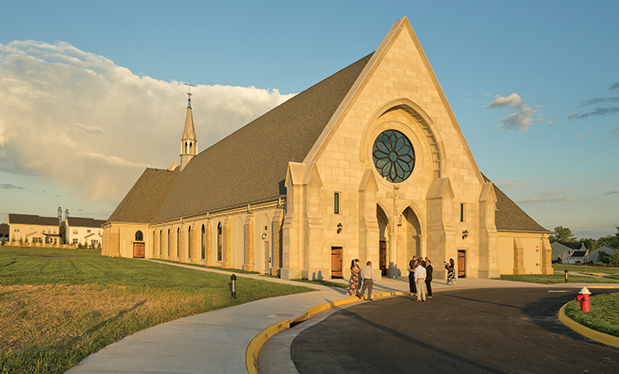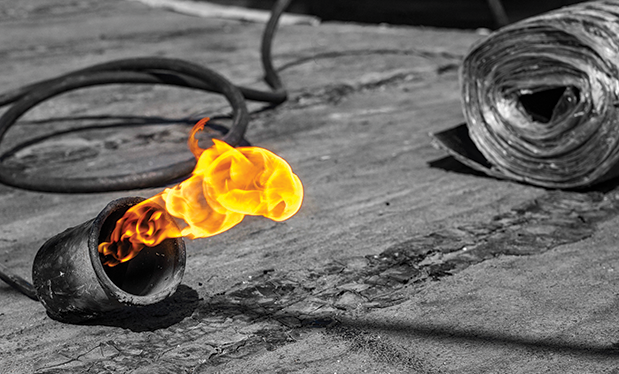Unintentional injuries killed 200,955 people in 2020, according to the Centers for Disease Control and Prevention. Twenty percent of those deaths resulted from falls, making falls the second-leading cause of accidental death in the U.S. followed only by automobile accidents. A majority of the deaths happened at home. However, an unacceptable amount of work-related falls continue to occur each year.
During 2020, 805 people died from workplace falls, and 211,640 people were injured badly enough to need days away from work, according to the Bureau of Labor Statistics. And one does not have to fall from heights to be seriously injured—of those 805 deaths, 136 fell on level ground.
Although nonfall-related workplace fatalities have decreased 26% during the past 30 years, fall-related fatalities have increased 17% during the same time frame. The Occupational Safety and Health Administration noticed this trend, updated its 1910 General Industry Standards Subpart D—Walking-Working Surfaces in 2018 and has made fall prevention a top priority. OSHA’s annual National Safety Stand-Down To Prevent Falls in Construction represents that push. Luckily, falls are preventable, but you must take fall protection seriously and be proactive to protect yourself, your employees and your business.
BAD FOR PEOPLE AND BUSINESS
Each year, OSHA inspectors visit thousands of worksites in the U.S. and issue citations for regulatory violations. To boost safety awareness and compliance, OSHA published its Top 10 Most Frequently Cited Standards for 2021. Four fall-related standards made it into OSHA’s top 10. The most-cited standard is fall protection, and coming in third is ladders. Scaffolding and fall-protection training came in fourth and seventh.
The reality of how many workers in the U.S. are not receiving proper protection from falls is apparent. Fall-related fatalities are trending upward, and unfortunately, without a focused effort by employers to increase fall-protection safety, the trend will continue. The amount of pain and suffering for individuals and their families caused by accidents is incalculable. Providing employees, contractors and vendors with safe working environments free from recognizable hazards not only is a legal and moral obligation but also is an intelligent business decision.
The monetary cost and reputation damage caused by accidents can permanently cripple a business. A serious accident often can result in expensive medical bills, regulatory fines, loss of productivity, increased insurance costs, lawyer fees, settlements and loss of future business.
Although it is an employer’s responsibility to provide a safe work environment, effective safety measures require a team effort. It is everyone’s responsibility to adhere to safe working practices and identify hazards. The more people you have to identify hazards and the more people work together to create safe job sites, the safer your workers will be.
FALL PROTECTION IS NOT EQUAL
Some forms of fall protection are more effective than others, and it is essential to understand the hierarchy. First, the most effective way to address a hazard is to eliminate it. For example, instead of accessing a roof with a ladder, take the stairs. Doing so prevents employees from being exposed to the risk of climbing a ladder.
If you cannot eliminate the hazard, the next best option is passive fall protection. Some examples of passive fall protection are guardrails, roof hatch rails and skylight screens. Passive fall protection works without any user interaction and does not require any training to be effective. This is a significant benefit because it eliminates the potential for user error present with many other forms of fall protection.
Also, passive fall protection does not require certification or inspection and has a longer lifespan than other fall-protection options. When you combine all these factors, passive fall protection is one of the best ways to keep employees safe from falls.
Next in the hierarchy are travel restraints, which act like leashes and prevent workers from getting near fall hazards. An example is a harness with a 6-foot lanyard attached to certified anchorage 10 feet away from a fall hazard. With travel restraints, employees cannot fall from heights because they cannot physically reach the fall threat.
Single anchorage connectors are suitable for fall restraints. However, they sometimes can restrict mobility too much. This lack of freedom of movement can encourage workers to disconnect completely or force them to disconnect and reconnect to different anchorage connectors as they move around a work area. This means workers must have multiple lanyards or go unprotected for a portion of the time.
A better option for fall restraint is a linear system, such as a horizontal lifeline or a rigid rail system. These systems encourage freedom of movement and allow workers to be tied off 100% of the time while accessing the entirety of their work areas.
Next on the list is one of the most commonly used forms of fall protection—fall-arrest systems. An example of a fall-arrest system is a worker wearing a harness with a self-retracting lifeline connected to certified anchorage. Fall arrest is an effective form of fall protection, but the user must be involved in a fall for it to work. Think of it as a seatbelt: It can save your life, but you need to be in an accident for it to save you, and you could suffer some injuries. Fall arrest is your last line of defense, but it always is better to prevent a fall than to be saved from one.
Finally, the fifth and least effective fall-protection method is administrative controls. These are rules created by management represented by warning lines or controlled access areas. They alert employees when they are nearing a fall hazard, but they offer no protection if a worker does not notice them or ignores them.
Warning lines are one of the most commonly used forms of administrative fall protection. For example, you often will see stanchions instead of cones with flags strung every 6 feet, forming a barrier around a roof’s edge. For a warning line to be OSHA-compliant, it must be 15 feet or more away from the fall hazard for nonroofing workers. In addition, employees must not work between a warning line and fall hazard, and an employer must have rules to prevent workers from passing the warning lines.
COMPLACENCY
It is easy to become complacent about the dangers we encounter daily. For example, 38,824 people died in motor vehicle accidents in the U.S. in 2020, according to the National Highway Traffic Safety Administration. Yet in any major U.S. city, you can see people texting on their phones, eating a meal or putting on makeup while driving over 65 mph on a busy highway. These drivers have become complacent, but they would give driving their full attention if they recognized the actual danger.
It often takes someone to be involved in an accident to become aware of the hazards in his or her world. Unfortunately, fall hazards have become the same way for many trades. For example, maintenance workers and service technicians spend most of their workweek climbing onto and moving around roofs with little to no fall protection available. They may recognize the roof’s edge as a hazard, but they can be blind to multiple other threats consistently present.
THE APRON APPROACH
Tightening regulatory scrutiny and the upward trend of work-related falls means a new approach to fall prevention is urgently needed. Diversified Fall Protection, Westlake, Ohio, is confronting the issue using its APRON approach to rooftop hazard assessment.
APRON stands for access points, perimeter, rooftop equipment, openings and navigation. It is a learning technique that will help you quickly remember the five most common rooftop hazards and keep them top of mind the next time you are on a roof or conducting a fall-hazard assessment.
Access points
It is common to find fixed ladders with little to no fall protection, and every time you climb a ladder to access a roof, you are at risk of falling. However, changes to OSHA’s standard for walking-working surfaces, 29 CFR 1910.22, adopted in 2018 means building owners must look at their ladders to ensure safety and compliance.
Newly installed and renovated ladders that extend 24 feet or higher above a lower level no longer can use safety cages to protect users.
Instead, they must have ladder safety systems or personal fall-arrest systems to comply with the new regulations.
Perimeter
Many roofs do not have fall protection installed to protect workers from falling over the edge. However, if workers are required to come within 15 feet of a roof’s edge, they need fall protection, which means after-market solutions are necessary.
Even roofs with parapet walls may not provide enough protection. For example, if you measured the height of an average parapet wall along its entirety, you might be surprised how low it can be in certain areas. Often, parapet walls are not high enough to satisfy OSHA regulations, which require they be at least 39 inches from the working surface to be considered fall protection.
Therefore, even if there is a parapet wall, you still may need additional fall-protection measures to keep workers safe and comply with the OSHA standard. To address this issue, installing guardrails, a horizontal lifeline or a rigid rail system is a viable option.
Rooftop equipment
Often, the safety of maintenance personnel is not considered when designing a building. For example, OSHA requires nonroofing workers be protected from a fall when they come within 15 feet of an unprotected edge. However, many pieces of rooftop equipment are placed within 15 feet of a roof’s edge and offer no fall protection. Guardrails, certified anchorage, lifelines and rigid rail systems are solutions to this common issue and allow workers to access the equipment safely.
Openings
Roof hatches can be hazardous. If one is unintentionally left open, it is easy for someone to accidentally step into it and fall to a lower level. Protecting roof hatches with guardrails and a swing gate is the best way to prevent an accident. Without these measures, you rely on employees to close a hatch after they enter a roof. It’s better to place a passive system that continually protects employees regardless of whether a roof hatch is left open.
Skylights and vents also are hazards. Covers may offer sufficient protection from a fall. However, the covers must be engineered to withstand a person’s weight so they do not break if they are fallen on. When protecting roof openings, you need an engineered solution. Do not assume something is strong enough; confirm it is. Guardrails and screens are solutions for skylights and hatches because you can maintain functionality while ensuring safety.
Navigation
Ductwork, piping and other rooftop equipment can make navigating a roof hazardous. For example, imagine a maintenance worker wandering across a snow-covered rooftop within 15 feet of an unprotected edge. You can see how this situation can be dangerous and why building owners must take steps to create safe walkways for employees to move around rooftops.
If employees do not have a designated route, they will create their own, which may involve stepping over or ducking underneath equipment, exposing them to slips, trips, falls and other hazards. By designating a safe path for employees to access the areas they need, you can eliminate hazards and ensure employees do not walk into dangerous or restricted areas. Installing ramps, crossovers, service platforms and elevated walkways will allow workers to navigate a roof safely.
BE PROACTIVE
It takes careful planning and proactive measures to protect your employees and company from falls. Conducting periodic fall-hazard assessments of your facility using the APRON approach is a great way to prevent falls and other accidents. If you need help assessing your hazards, fall-protection professionals are available to assist.
KEVIN KELPE is continuing education manager for Diversified Fall Protection, Westlake, Ohio.



